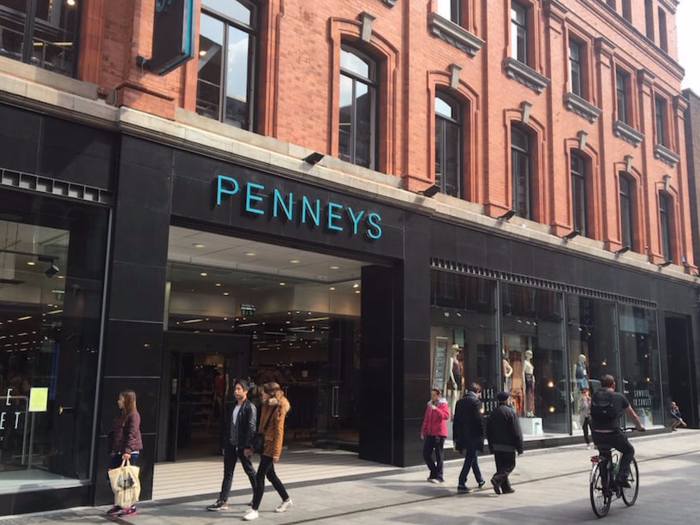
When the company expanded to the UK in 1973, it was forced to change its name as the US department store, JCPenney, was already registered there.
The name Primark was born, and from then on, it was used for any of its stores that opened outside of Ireland.

Source: Primark and The Economist

At the time, analysts expected the store to pose a threat to rival US apparel stores such as Gap and Abercrombie, by undercutting them on price and offering a constant turnover of new styles.
A study done by Morgan Stanley in 2016 found that prices at Primark were, on average, 202% lower than average US apparel prices.

It now operates 353 stores across 12 countries.
See what it's like to shop at Primark's new Brooklyn store »

Source: Primark
In the past, the company has come under fire for its cost-cutting supply-chain tactics and the conditions in which its clothes are made.
In 2013, Primark was highlighted as one of the retailers that made clothes in the Rana Plaza factory in Bangladesh that collapsed and killed 1,100 workers. The company paid $14 million to victims' families and signed an agreement to promote safety at textile factories.

The typical Primark shopper tends to buy in large quantities because of the store's cheap prices. The baskets at the front of each store are a nod to this shopping habit, enabling customers to pile them up with new items.
"Consumers shop at Primark differently than they shop at a lot of retailers," Bernstein's Jamie Merriman told The Economist in 2015. "It's almost like shopping at a Costco, where you're thinking about it in terms of volume."
H&M sells an annual average of $5,250 worth of clothes per square meter in Britain, according to Bernstein data from 2015, while Primark sells approximately $8,200 worth.

Primark executives say it doesn't currently make economic sense to sell online because of expensive shipping and returns costs. The company would need to absorb these costs to keep prices down.
"We would, of course, keep our minds open to it, if we could find a model that works for us," John Bason, finance director of Associated British Foods, Primark's parent company, told The Wall Street Journal.

 Saudi Arabia wants China to help fund its struggling $500 billion Neom megaproject. Investors may not be too excited.
Saudi Arabia wants China to help fund its struggling $500 billion Neom megaproject. Investors may not be too excited. I spent $2,000 for 7 nights in a 179-square-foot room on one of the world's largest cruise ships. Take a look inside my cabin.
I spent $2,000 for 7 nights in a 179-square-foot room on one of the world's largest cruise ships. Take a look inside my cabin. One of the world's only 5-star airlines seems to be considering asking business-class passengers to bring their own cutlery
One of the world's only 5-star airlines seems to be considering asking business-class passengers to bring their own cutlery RBI bars Kotak Mahindra Bank from onboarding new customers via online, issuing fresh credit cards
RBI bars Kotak Mahindra Bank from onboarding new customers via online, issuing fresh credit cards
 GIGABYTE AORUS CO49DQ 49-inch QD-OLED 144Hz curved gaming monitor launched in India
GIGABYTE AORUS CO49DQ 49-inch QD-OLED 144Hz curved gaming monitor launched in India
 Sensex, Nifty climb on firm trend in global markets
Sensex, Nifty climb on firm trend in global markets

Copyright © 2024. Times Internet Limited. All rights reserved.For reprint rights. Times Syndication Service.